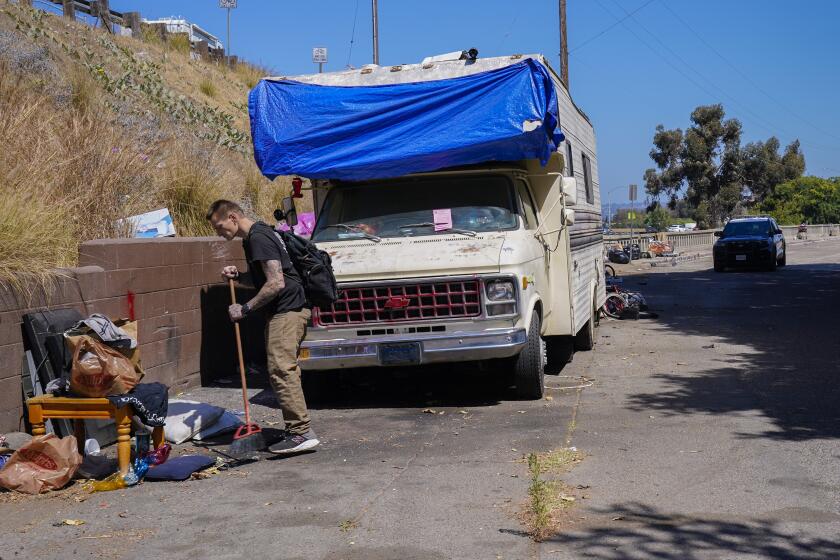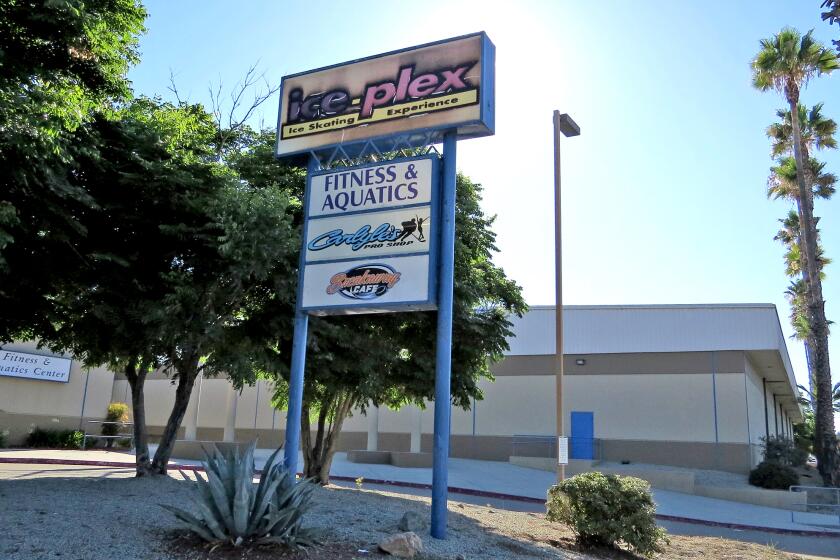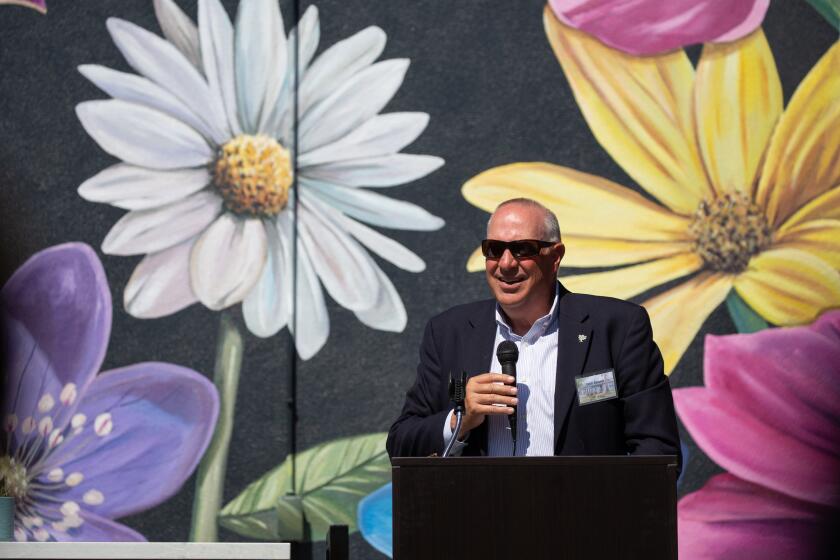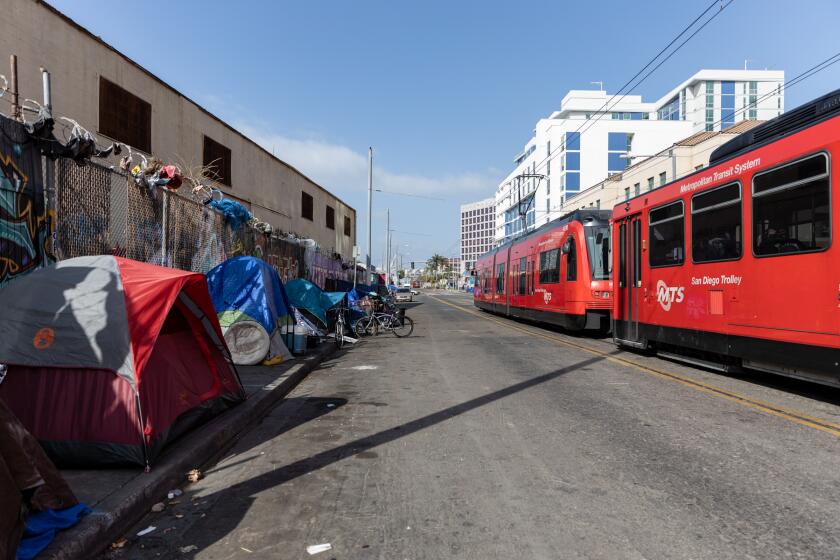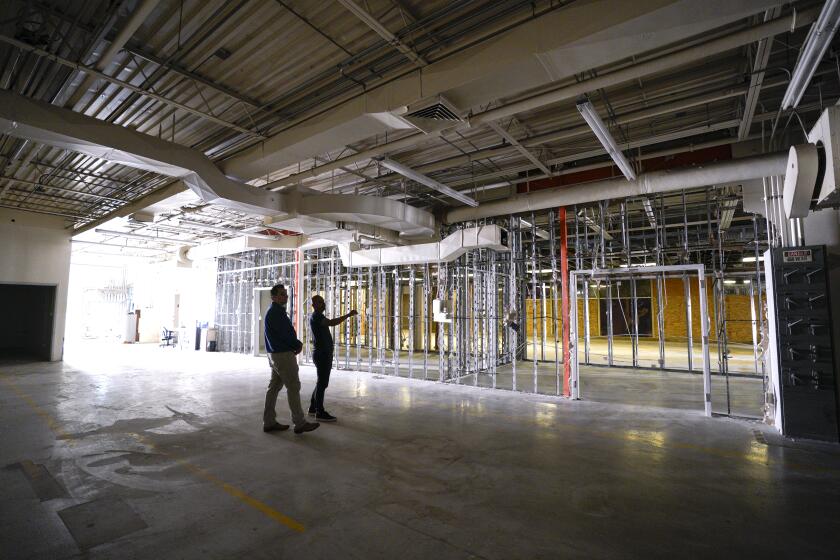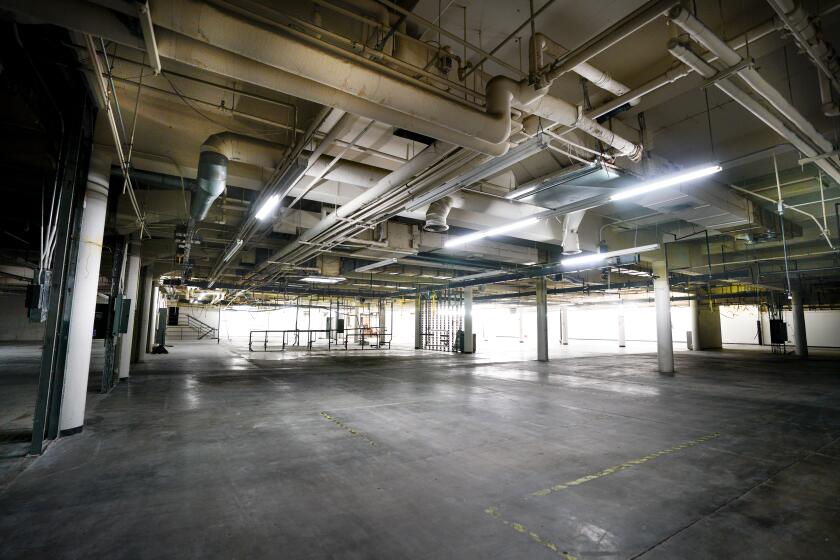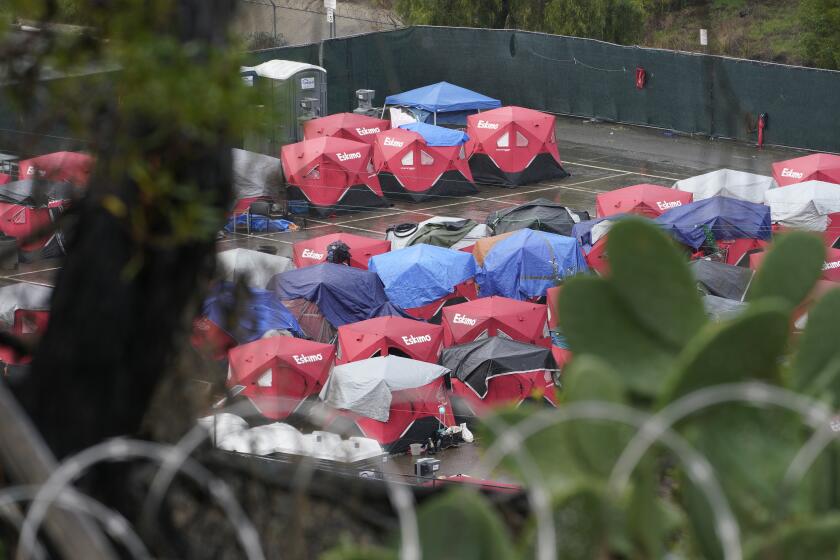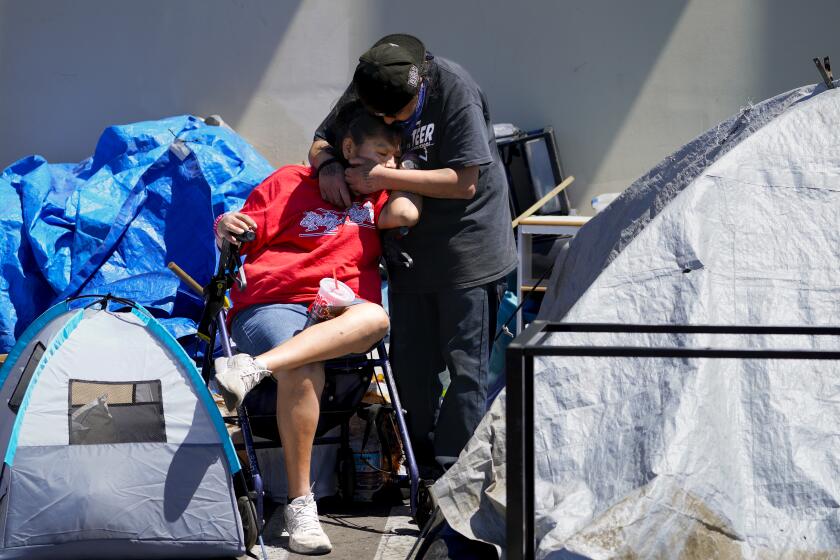Homeless people paid $2 per bag to keep their encampments clean in downtown San Diego
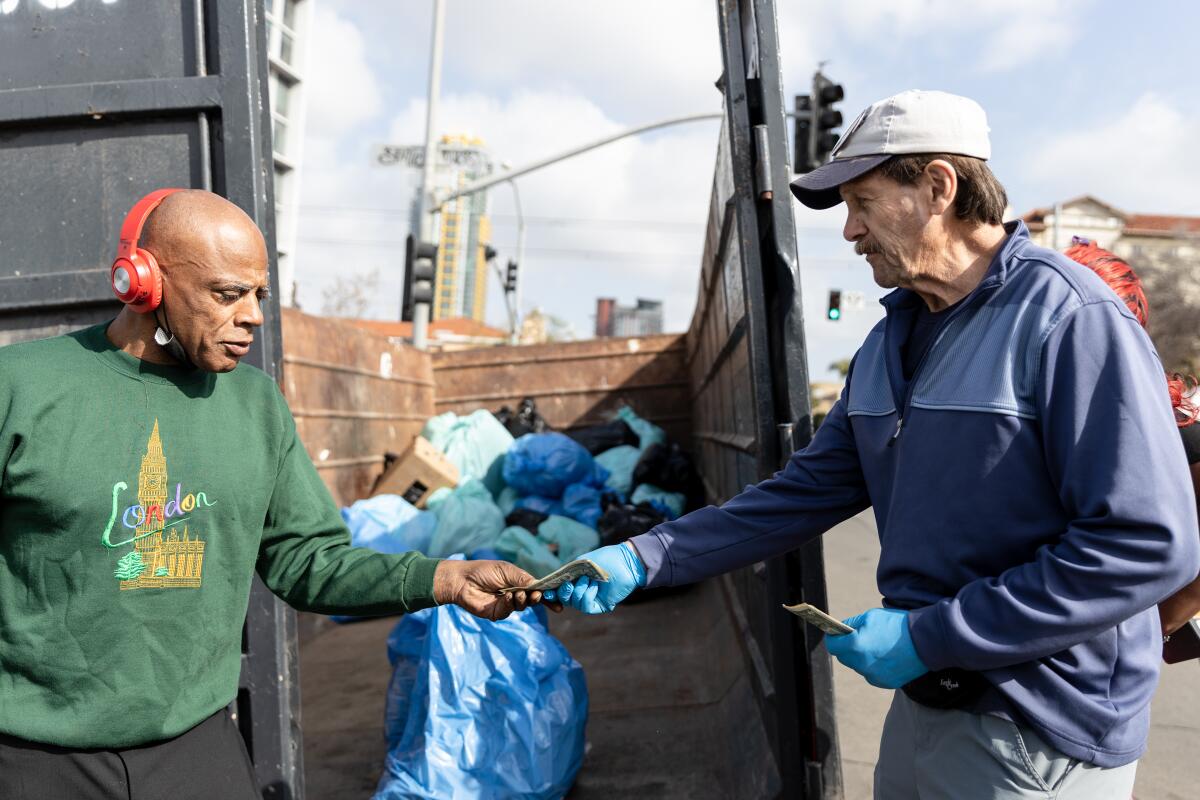
Four-month pilot program aims to reduce trash while uplifting residents living on the street
Twice a week over the next four months, homeless people who live in downtown San Diego encampments will pick up trash in their neighborhood to earn a little cash as part of a new pilot program.
“We like to keep our area clean,” said Art Kifer, 62, a Navy veteran who has been homeless six years and now stays in an encampment alongside a downtown street.
On Thursday morning, Kifer filled blue plastic bags with trash and hauled them to a large bin on the corner of 16th and Commercial streets, where he received $2 for each bag.
It’s not much, but people who participated were grateful for the opportunity.
“This will help us with bus fare so we can get to the Social Security office and get other resources,” said Israel Garcia, 44. “We’re out trying to get ahead in our lives ourselves. Sometimes it takes something as little as a few dollars to help us each day.”
Retired attorney Brian Trotier handed out the cash as part of a pilot program he created called the Triangle Project. The name comes from the downtown triangular areas the project covers, one bordered by 16th Street, Commercial Street and National Avenue and the other bordered by 17th Street, Logan Avenue and Commercial Street.
Trotier had been handing out food in the neighborhood for the past couple of years as a volunteer with a program funded by the Lucky Duck Foundation. While talking with people living in tents on the street and noticing the trash on sidewalks and gutters, he wondered if there was something more he could do.
“I got to know some people and heard some conversations that made me scratch my head about why we weren’t doing certain things,” he said.
One of the people he talked to was Richard Horton, 67, who has been living in a makeshift shelter on Commercial Street since losing his job three years ago.
“He said, ‘We’d love to clean up the area, but we don’t have any place to throw the trash,’” Trotier said.
Trotier also had noticed that there were few trash cans in the neighborhood, and over the past several weeks he began putting together a plan.
He contacted the waste disposal company EDCO, who agreed to set up a large bin in the neighborhood on Mondays and Thursdays.
Lucky Duck agreed to provide $20,000 to fund the program over four months.
Drew Moser, executive director of the Lucky Duck Foundation, said they saw the Triangle Project as an opportunity to give homeless people an opportunity to contribute to the cleanliness of their surroundings but added that the philanthropic organization also advocates for more short-term, immediate strategies such as shelters to move people off the street.
“We also liked that the idea was born, in part, from a homeless individual who was looking for an opportunity to play a helpful role in the cleanliness of his surroundings,” he said.
The program was launched Monday, and 81 bags were filled by about 20 people, Trotier said.
The effectiveness of the program will be evaluated after four months, and Trotier said it may continue in some way with additional funding. He also hopes it will raise awareness that more trash cans are needed in the area.
In another outcome, he said the city may cut back on regular sidewalk cleanings if people in encampments keep their areas clean themselves, which could save some tax dollars and make life easier on the people on the street who have to move their tents each week.
Horton said that would be a welcome relief, as his encampment includes a few tents, bicycles, a generator and many other items.
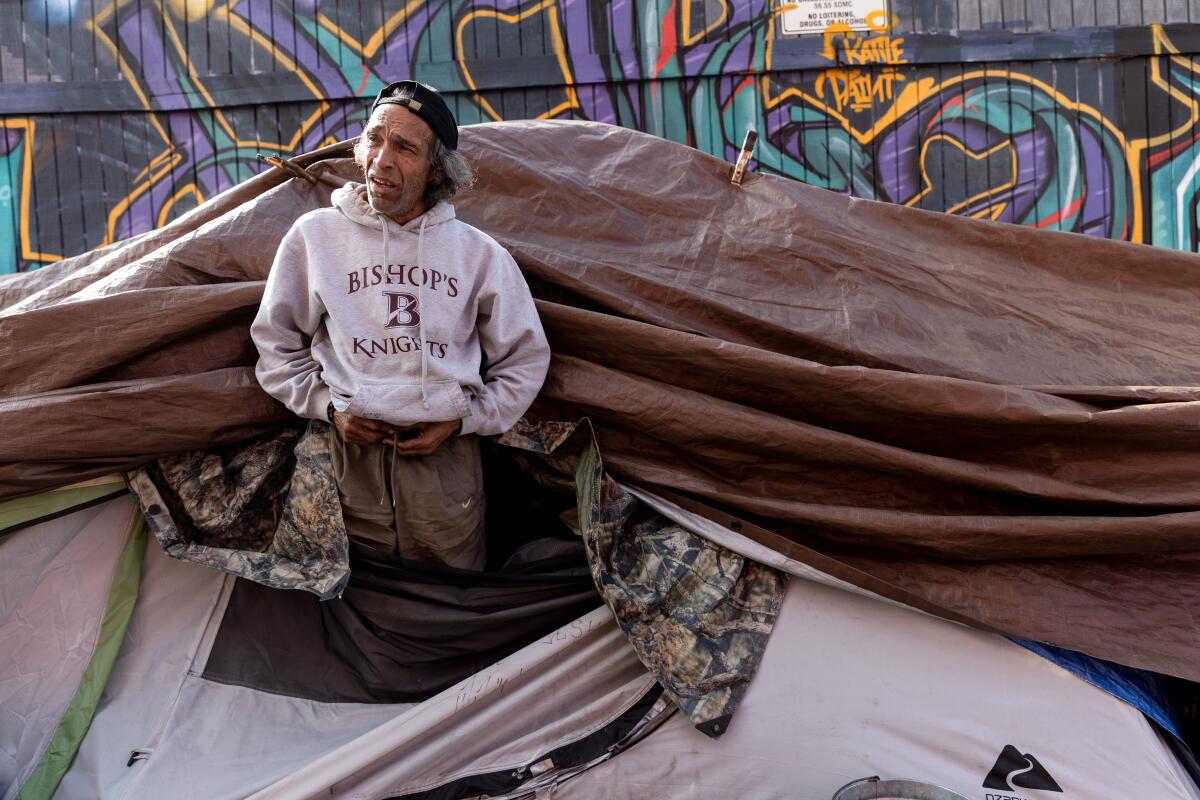
Trotier said he found “block captains” on the street to spread the word about the program, and people were ready to go to work on the first day.
“I was skeptical at first, but then I saw people walking away with cash in their hands,” Garcia said.
On the corner of 16th Street and Imperial Avenue, Garcia filled up two bags with trash, which just made a dent in the mound of debris still in the gutter.
Garcia said he became homeless following a divorce a few years ago. Kifer said he moved out of an apartment complex six months ago because it had “become like a halfway house.”
Jay Espinoza, 19, said he was living in Arizona with his grandparents, but moved to San Diego to be near his mother after they died last year and he had no place to go.
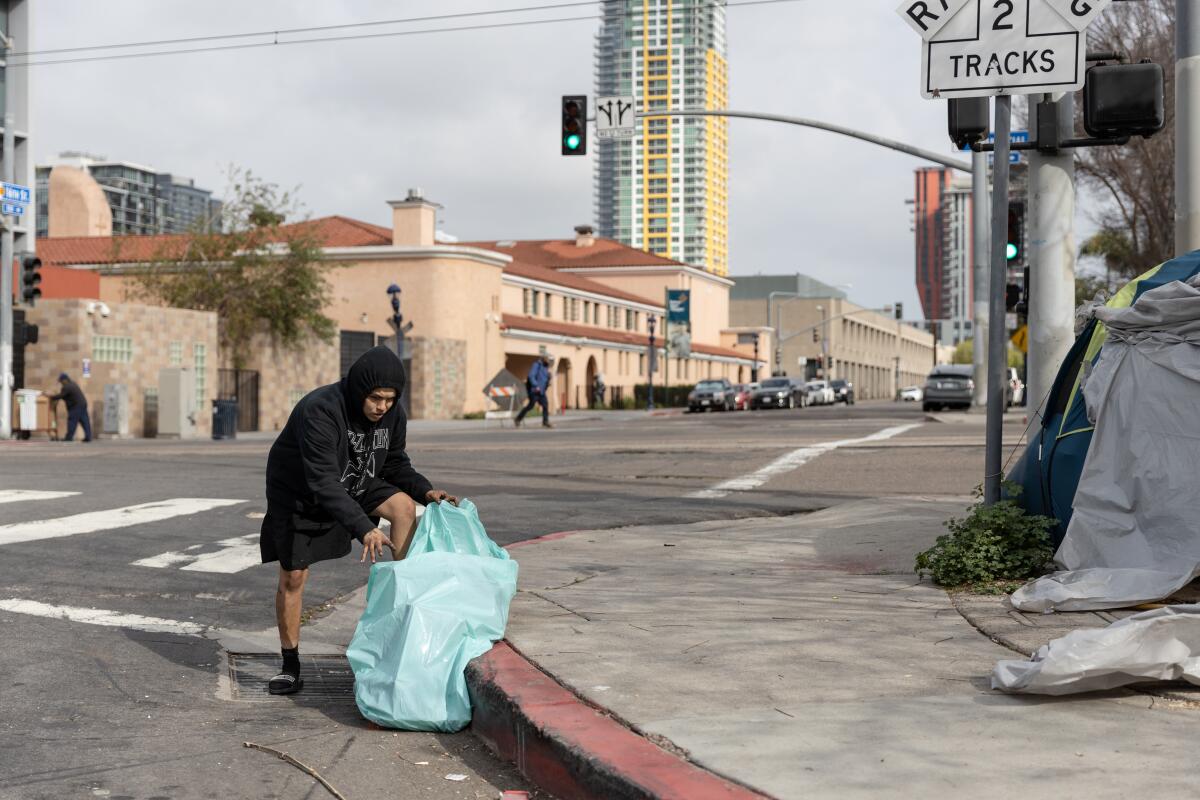
“I have severe ADHD (attention-deficit/hyperactivity disorder), so this is keeping me busy,” he said about the trash program.
At 5 feet tall, Espinoza struggled to haul some of the bags he stuffed with trash but boasted that his stature would not hold him back.
“You guys are doing a good thing,” he said to Trotier and other volunteers with him Thursday. “I was always cleaning anyway, because I like a clean environment. I just found out about it (the project) today, and now I’m making money.”
While interviews with homeless people find the vast majority became homeless while living in San Diego, there are exceptions.
Casper Caspian, 42, said he was on a track to become homeless because of his life choices while living in south Florida, and moved to San Diego five years ago after an Internet search found it was the best place in the nation to be homeless.
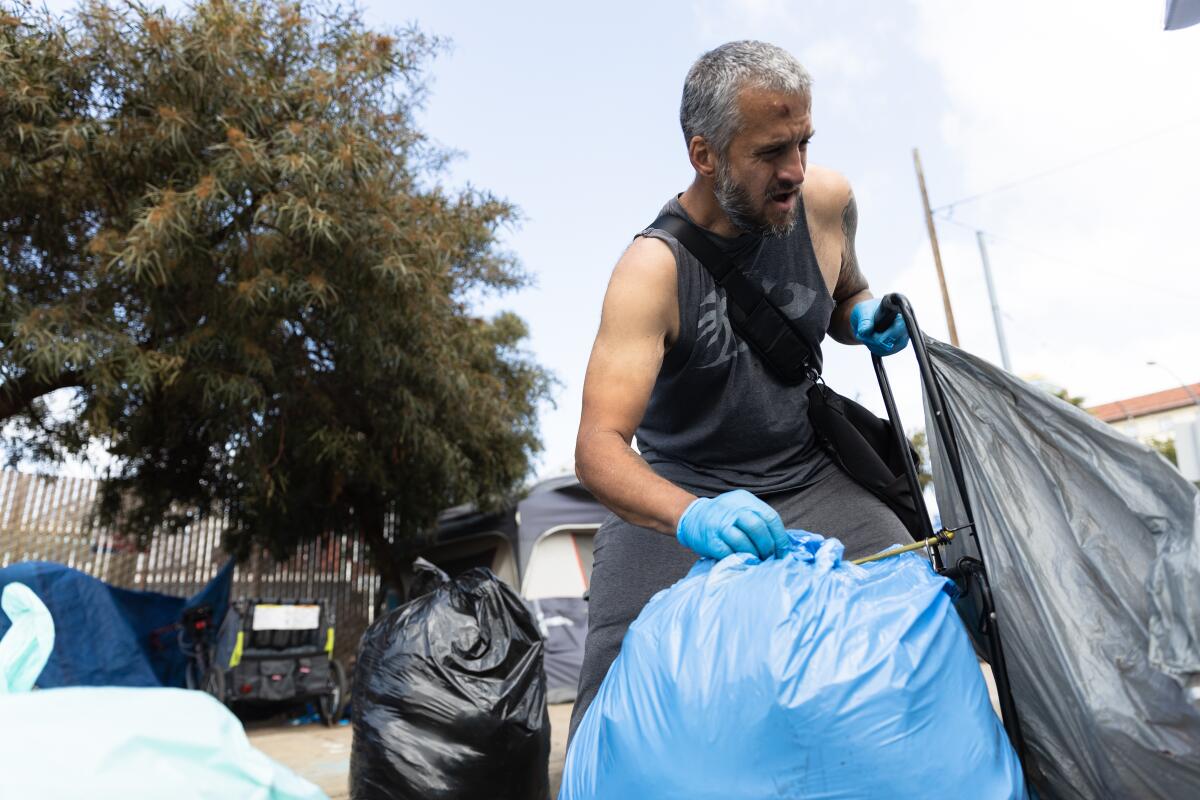
For the record, some websites say Hawaii, Seattle, Houston and other areas are the best places to be homeless.
“Some like me who’s motivated, I can make some money, but I’m also giving back,” Caspian said about the trash program.
He’s not convinced that more trash cans in the area would keep the neighborhood cleaner because some people would just dump them out looking for items they can recycle for money. But Caspian said it would be nice if cleaner streets would mean fewer days of city cleanups that require people to move their tents.
“I do understand there is a civil order that needs to be maintained, but at the same time, we would like to have some semblance of civilized life, some kind of sense of home,” he said. “And every time they come around, we have to disassemble it.”
Tovijo Kellum said she has been homeless six years and appreciated the trash program because participating in it gives people a sense of responsibility and a feeling that they’re doing something positive for the community.
“It gives us the opportunity to get out and not feel like you’re a plague on society,” she said. “You’re contributing to society. And it gives people an opportunity to start cleaning up after themselves again, and maybe learn what it’s like to be an adult instead of just feeling entitled to stuff.”
Kellum said her homelessness was the result of a series of events that began with a 2005 accident. She was thrown from a vehicle that hit a large pothole, and her head was run over. Pulling back hair on the back of her neck, she revealed screws embedded in her skull and said she has undergone 32 brain surgeries and 28 eye surgeries.
Paralyzed on her right side, she managed to bring several trash bags to the bin by loading them onto a wheeled cart.
“There are a lot of good people,” she said about those living in the encampments around her. “I’ve had a lot of ups and down here, and I would not wish this lifestyle on the worst enemy by far. I’m glad my mother did not live to see me out here.”
Trotier said he has been heartened to hear many homeless people who have pitched in say they want to keep their encampments clean, and earning some cash for cleaning up the area restores a sense of dignity.
He also has heard positive responses from local business people who have seen the cleanup teams.
“One of the business owners said it best,” he said. “‘Whether we like it or not, right now they’re our neighbors.”
Get Essential San Diego, weekday mornings
Get top headlines from the Union-Tribune in your inbox weekday mornings, including top news, local, sports, business, entertainment and opinion.
You may occasionally receive promotional content from the San Diego Union-Tribune.

